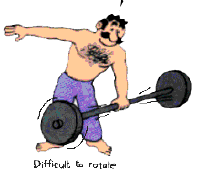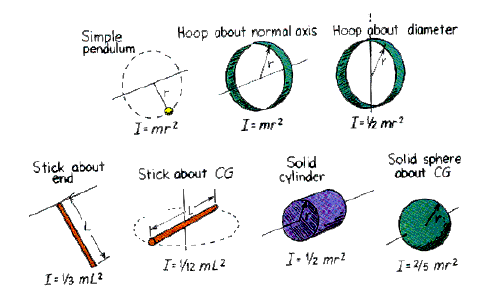

Mass--regular, ordinary, linear mass--is a measure of inertia, of how easy or difficult it is to put an object in motion or to bring it to rest.


Likewise, the rotational mass of an object is a description of how easy or difficult it is to rotate a body or to stop it once it is rotating.
This rotational mass is also known as
Rotational mass depends upon the mass and how the mass is distributed. Rotational mass will be greater if the mass is farther from the axis of rotation and it will be less if the mass is closer to the axis of rotation.
Masses close to the axis of rotation have a small rotational mass. This means they are easy to rotate.


Masses far from the axis of rotation have a large rotational mass. This means they are difficult to rotate.



How does this rotational mass affect the motion of a rolling object?
Let's consider a hoop or ring and a solid cylinder or disk that roll down an inclined plane. Which gets to the bottom quicker?

For a given mass, the disk has a smaller rotational mass than the ring. This means it is easier to rotate. So the disk wins &endash; every time!
(C) 2003, Doug Davis; all rights reserved